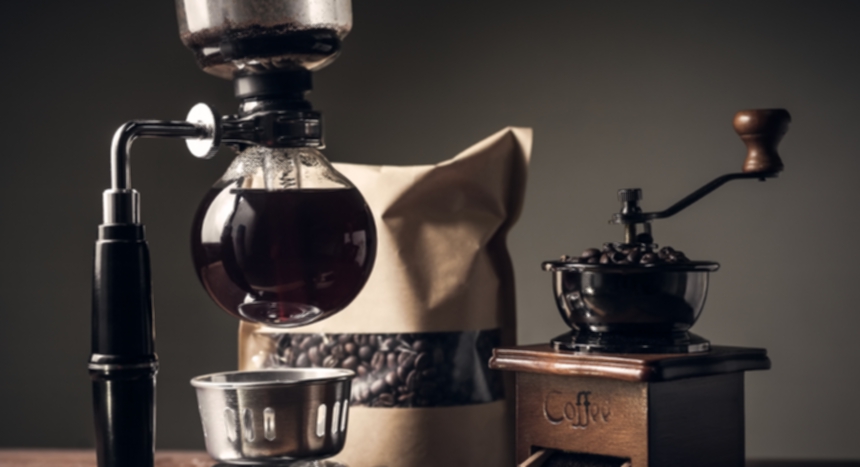
Usually, immersion and drip coffee brewing are two different worlds, with less overlap. The siphon pot (also known as the Siphon pot) is a distinctive coffee appliance that creates a thick, clear cup of coffee. Siphon pot: A device for boiling in the application of scientific principles How does the siphon pot work? As the water heats up in the bottom seat of the siphon, the gas starts to escape, and the vacuum created by the bottom seat causes the water to move up the seat. When the fire in the next seat goes out, the air at the bottom cools, allowing the coffee to return to the next seat. It sounds complicated, but it's not that hard to do it all at once (making siphon coffee tasty and stable is, of course, difficult). Do you drink coffee every day? Do you add extra flavor to your coffee?
The History Of The Siphon PotThe story of the siphon pot began with a group of people who drank bad coffee. The earliest version of the siphon was invented by Love in Berlin, Germany in the 1830s. From then on, the siphon became popular in Europe, and everyone recognized its advantages. Many patents were sent out for the original design to improve the performance of the appliance, but the most notable was Mrs. Vassieux's 1841 design, the French Siphon Balloon, which was very similar in appearance to the siphon POTS we use today. The balanced siphon (Belgian pot) is another important invention in the history of siphons. Although it originated in the mid-19th century, it works similar to the French siphon, except that it can turn off its own heat source. The two chambers of the balance siphon are placed side by side. When the water is transferred to the other chamber, the balance device designed for counterweight is activated by the weight change, which in turn triggers the heat source to shut down. Do you drink some iced coffee on a hot summer day? Do you know the difference between cold brew, cold drip, and iced coffee? By the end of the 19th century, siphons had spread to the United States and were not produced locally until the 20th century. In 1915 Ann Bridges and Sutton of Massachusetts marketed siphon POTS under the name Silex. They also used a new heat-resistant Pyrex glass, which means that unlike previous styles of siphons, the Silex is less likely to crack.
What Kind Of Coffee Can A Siphon Brew?This method combines immersion (e.g., French press) and drip brewing (e.g., V60) to produce a rich, clear coffee. Siphon POTS are perfect for bringing out the qualities of coffee, and it's the balance of flavor and texture that makes Siphon coffee so unique. A siphon pot was used to match the Cadoura variety coffee from the Colombian estate, which has a bright fruit acid finish with mild hazelnut and toffee aroma. As a coffee lover, do you know something about the history of coffee?
How To Make Coffee Using A Siphon Pot?First, boil it in water and clean the filter. Place it on the bottom of the upper seat and hook the colander to the bottom of the glass tube. Add 510ml boiling water to the bottom seat and turn on the heat source. Place the top chamber above the bottom chamber. When the water starts to rise from the bottom seat to the top seat, grind 34 grams of coffee beans, using a medium to fine grind slightly finer than a hand flush to flush. Once all the water has risen to the top, lower the heat source as much as possible so that the water does not drop. Stir a few times to cool the water on top (ideally between 90 and 96 degrees). Do you prefer espresso or drip coffee? Do you know the difference between espresso and filter coffee? Pour the coffee into the water in the top chamber and start the timer. Stir the coffee with a stir stick or spoon, wetting all the coffee with as little disturbance as possible. The brewing process is allowed to continue undisturbed for about 90 seconds (or less depending on the brewing recipe), then the heat is turned off and removed, and the coffee is stirred for a few more times. When the coffee in the top seat starts to cool, it starts to flow to the bottom seat, which can take another tens of seconds, and when the descent process is complete, the coffee in the bottom seat will bubble from the air taken in by the remaining coffee. As a coffee fan, how much do you know about holes in coffee bags? Some people use Chemex to help cool the coffee after removing the glass from the top seat (siphon coffee is usually hot). Finally, don't forget to maintain the filter after you finish cleaning the top chamber. If using a filter cloth, you can boil it in hot water and refrigerate it as it cools. This will avoid lingering odors and prevent the cloth from becoming brittle when it dries. Then enjoy a cup of rich but clear siphon coffee! Get More: Mastodon Online - Decentralized social media |
Brewing Guide Of Siphon Coffee